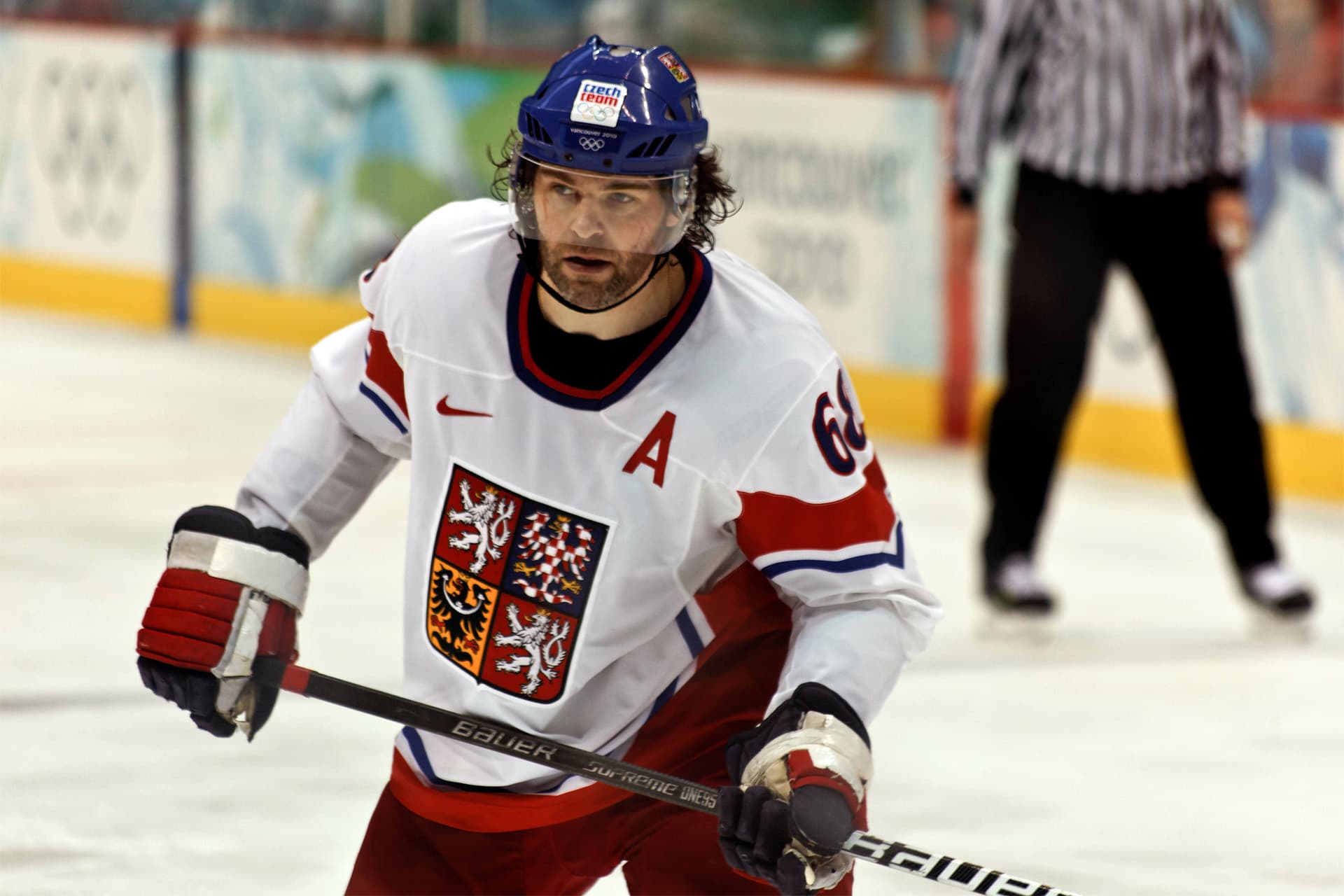Nation Sites
The Nation Network
FlamesNation has no direct affiliation to the Calgary Flames, Calgary Sports and Entertainment, NHL, or NHLPA
Here’s how the Flames can sign Jaromir Jagr and stay under the cap

It’s hard to go anywhere around town these days without being asked about the possibility of the Calgary Flames signing hockey legend Jaromir Jagr. The fit from the Flames side is pretty obvious: he’s the second-leading scorer in the history of the National Hockey League, he’s a right wing, and he can play with talented players (such as Sean Monahan and Johnny Gaudreau, for example).
But given that Sam Bennett has yet to sign a new contract, the big question regarding Jagr’s financial fit in the Flames’ plans lies in how they can cram him under the cap.
The answer lies in two simple words: performance bonuses.
Let’s just say that Jaromir Jagr would like to make about $3.5 million next season. The Flames have roughly $7.1 million in cap space, but still need to re-sign Bennett and fill three depth roster spots. Cap space is tight and the Flames probably want to keep some wiggle room for injuries and mid-season moves.
Here’s where bonuses factor in.
Jagr’s 45 years of age under the CBA. Because he’s older than 35, he falls under different contractual signing rules that allow him to make performance bonuses as long as he’s signed to a one-year deal. Consequently, he’s signed six consecutive one-year deals with all but one featuring performance bonuses. The logic behind the instrument is pretty sound: what if your team signs an old player and he sucks? Thus, a lot of older players sign deals with low base salaries and performance incentives to hedge their bets. If the player performs well, they get their money and the club breathes a sigh of relief. If they underperform, the team doesn’t take a gigantic kick in the wallet.
Let’s just say the Flames are comfortable paying Jagr around $3.75 million next season. Conceivably the Flames could give Jagr a $1 million base salary and $2.75 million in escalating performance bonuses tied to markers like games played, goals, points or the team’s playoff performance. Teams can go over the salary cap by up to 7.5 per cent of the cap – $5.625 million this season – as long as that overage is all performance bonuses.
The only players likely to spend significant time on the NHL roster who would qualify for performance bonuses would be Matthew Tkachuk, Mark Jankowski and Spencer Foo. As long as the team structured Jagr’s prospective bonuses so that they, combined with the entry-level bonuses, wouldn’t be more than $5.625 million, they’d probably be fine with spending over the cap this season. (The downside of this approach is that any bonus overage from this season would eat into next year’s cap, so this is why teams don’t usually rely on bonuses to balance the books for a season.)
We’ll have a better sense of Jagr’s financial fit once Bennett, Brett Kulak and Tyler Wotherspoon are all signed, but a bonus-heavy deal could be the way for the Flames to have their Jagr and their cap space, too.
Breaking News
- Flames Prospect Roundup: How the standings shape up entering the holiday break
- NHL Notebook: Sidney Crosby takes sole possession of most points in Penguins’ franchise history
- FlamesNation Mailbag: Waiting for Santa with reader questions
- Flames injury news: positive signs for Martin Pospisil
- Recap: Martin Frk leads Wranglers to memorable Winter Wranglerfest win in more ways than one
